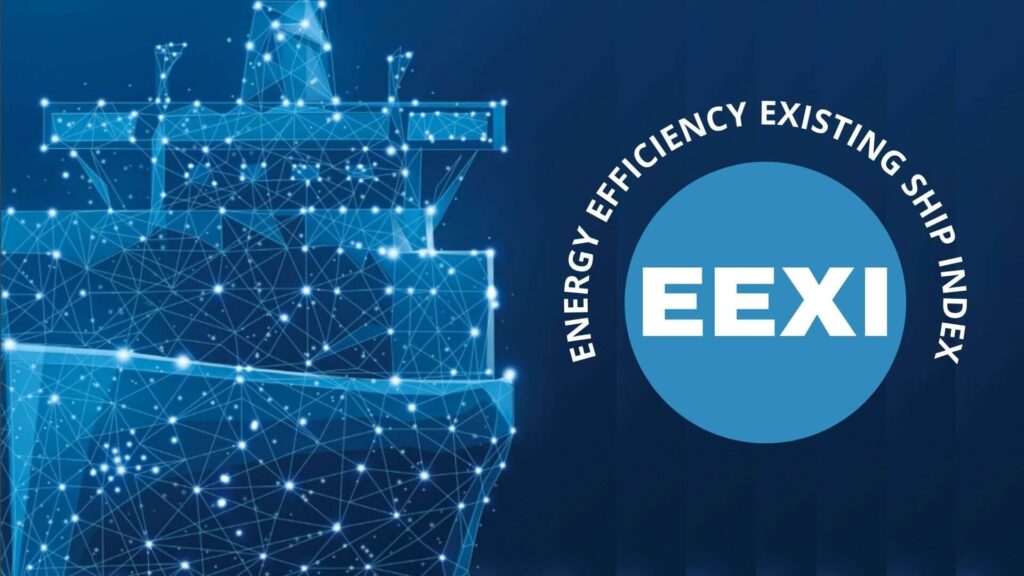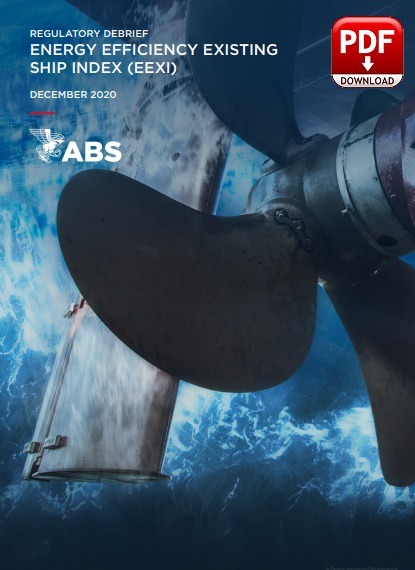
(www.MaritimeCyprus.com) During MEPC 75 in November 2020, the IMO approved amendments to MARPOL Annex VI, introducing an Energy Efficiency Design Index for existing ships (EEXI). Subject to adoption at MEPC 76 in June 2021, the requirements enter into force in 2023. The attained Energy Efficiency Existing Ship Index (EEXI) is required to be calculated for every ship. This indicates the energy efficiency of the ship compared to a baseline. Ships are required to meet a specific required Energy Efficiency Existing Ship Index (EEXI), which is based on a required reduction factor (expressed as a percentage relative to the EEDI baseline).
EEXI overview
With the Greenhouse Gas Strategy towards 2050, the IMO has set the goal to reduce carbon intensity by 40% within the next decade up to 2030 and by 50% in total (70% intensity) up to 2050. The Greenhouse Gas Strategy was approved by the IMO in 2018. The reduction rates are related to the baseline of 2008. Short-term, mid-term and long-term measures are distinguished to achieve the goal.
Short-term measures are meant to be set into force by 2023. Different measures were considered and widely discussed, for example the introduction of a speed limit. With the experience of market-driven slow steaming for nearly one decade, this measure is promising with regards to its potential to save CO2 emissions.

Introduction of the Energy Efficiency Existing Ship Index (EEXI)
During MEPC 75 in November 2020, the IMO approved amendments to MARPOL Annex VI, introducing an Energy Efficiency Design Index for existing ships (EEXI). Subject to adoption at MEPC 76 in June 2021, the requirements will enter into force in 2023. The EEXI will be applicable for all vessels above 400 GT falling under MARPOL Annex VI. Guidelines on calculations, surveys and verification of the EEXI will follow and be finalized at MEPC 76. Nevertheless, as the EEXI is the extension for existing ships of the newbuilding related EEDI, most procedures will be the same as for the EEDI, with some adaptations regarding limited access to design data. Already today, DNV GL's maritime advisory offers EEXI-related services based on IMO submissions which serve as the basis for the future calculation guideline.
EEXI implementation
An EEXI Technical File must be issued for most types of ships except for ships which were already built in accordance with EEDI Phase 2 or 3 requirements in the past. The EEXI Technical File includes the calculation of the attained EEXI, which must be below a required EEXI value. This required EEXI value is defined for different ship types, with reduction rates related to the EEDI reference curve. These reduction rates are in the range of EEDI reduction rates related to Phases 2 and 3, meaning that the required EEXI is almost in agreement with requirements for current newbuildings.
The EEXI Technical File must be submitted to class in time for approval and is required to be carried on board afterwards. During the first annual, intermediate or renewal survey after the effective date of the EEXI requirements, meaning within the year 2023, verification of the attained EEXI takes place and, subsequently, the new IEE Certificate is issued.

EEXI calculation
The calculation of the EEXI follows the calculation of the well-known EEDI. It is based on the 2018 calculation guideline of the EEDI, with some adaptations for existing vessels. Currently, only draft guidelines are available (submission ISWG-GHG 7/2/7), which will be replaced by adopted guidelines after MEPC 76 in 2021.
In principle, the EEXI describes the CO2 emissions per cargo ton and mile. It determines the standardized CO2 emissions related to installed engine power, transport capacity and ship speed. The EEXI is a design index, not an operational index. No measured values of past years are relevant and no on-board measurements are required; the index only refers to the design of the ship.
The emissions are calculated from installed power of the main engine, the corresponding specific fuel oil consumption of the main engine and of auxiliary engines, and a conversion factor between fuel and the corresponding CO2 mass. The transport work is determined by capacity, which is usually the deadweight of a ship and the ship speed related to the installed power.
The calculation does not consider the maximum engine power, but 75% of this power for most ship types. Specific fuel oil consumption of the main engine and ship speed are regarded for this specific power.
The EEXI is applied to almost all oceangoing cargo and passenger ships above 400 gross tonnage. For different ship types, proper adjustments of the formula have been introduced to allow a suitable comparison. This is performed by correction factors. Several correction factors are defined to correct the installed power, e.g. for Ice-class ships, as well as to correct the capacity, e.g. to consider structural enhancement. Further correction factors are applicable for cranes on board and for Ice-classed ships having IA Super and IA.
With all these correction factors being applicable only for specific ship types, the initially simple calculation of the EEXI might become quite complex for some ships. DNV GL's maritime advisory, with eight years and several hundred cases of experience in the calculation of the EEDI, offers reliable, accurate and profound determination of the EEXI attained for each ship, which is subject to EEXI regulations.
Attained EEXI = [gCO2/t.nm]

Differences between EEDI and EEXI calculations
There are often slight differences between the attained EEDI values of sister vessels. This is partly due to the varying lightweight of ships within a building series, but mainly caused by different ship speeds determined in individual sea trials of each ship.
For the EEXI, no sea trials are demanded unless these sea trials are performed within the EEDI certification, meaning that for pre-EEDI vessels, the relevant ship speed cannot be determined from on-board measurements. Instead, for these ships, the EEXI reference speed is determined from the speed/power curve determined in model tests of the specific design. Thus, sister vessels built without the EEDI will have the same EEXI reference speed.
A model test report will not be available for all ships. Therefore, the EEXI calculation guideline offers the option to calculate the reference speed with an approximate formula based on the ship type and installed power. With an included margin factor of 5%, this approximated reference speed will be conservative, so that it is recommended to provide model test reports whenever possible.
The possible lack of model test data is the reason for the introduction of the approximated reference speed formula. There might be an equivalent dilemma for the specific fuel oil consumption values of main and auxiliary engines regarding possible lack of shop test values. For this case standard, values for the specific fuel oil consumption of main and auxiliary engines are defined within the EEXI calculation guideline. Again, these standard values are conservative by trend, and the application of measured shop test data will improve the attained EEXI, so it is recommended to provide corresponding reports.
For more clarity, click below to download a Q&A paper:
Also available, a regulatory paper for the Energy Efficiency Existing Ship Index, from ABS:















